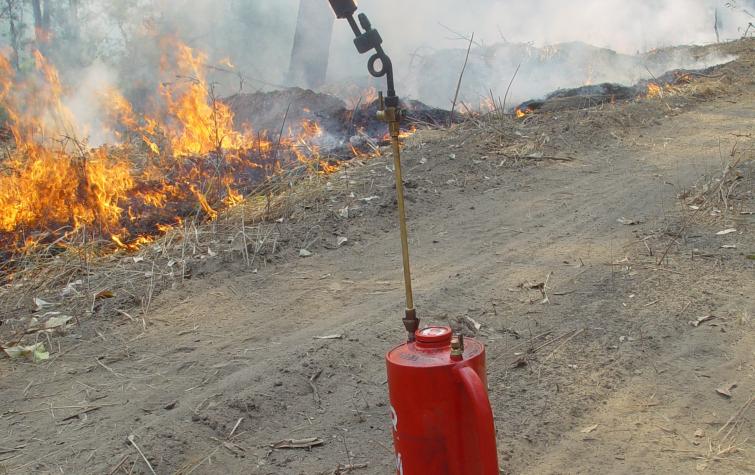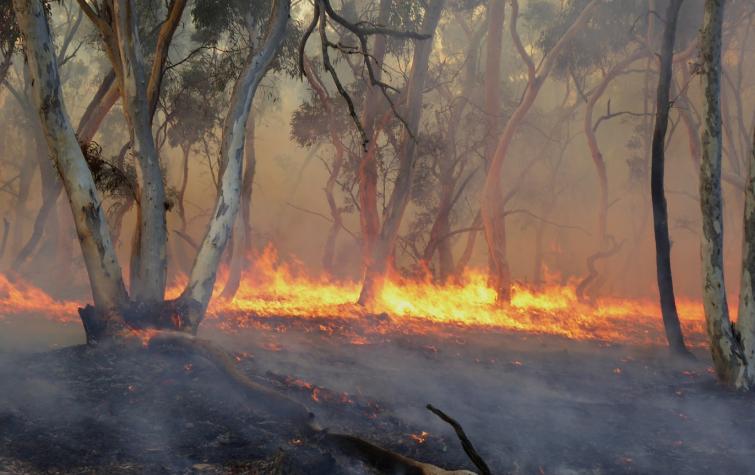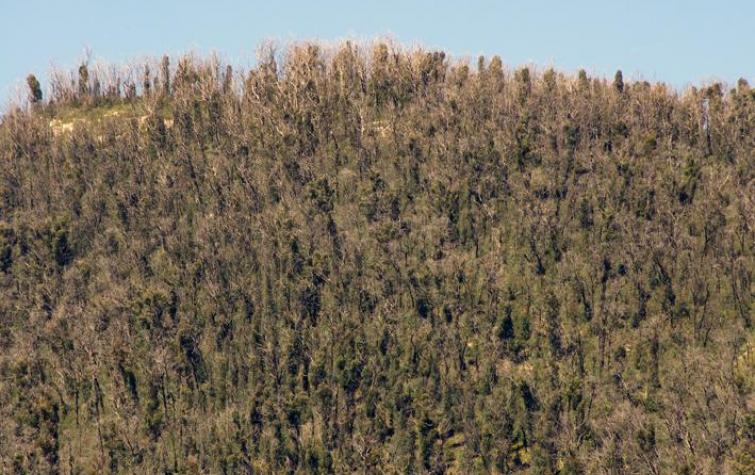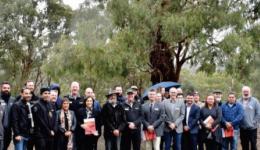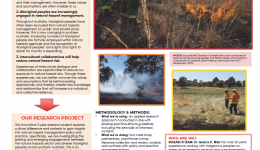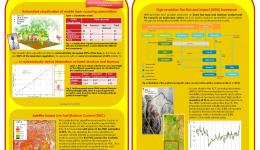Lead end user
Over six years, the project used cutting-edge technology to produce near-real-time spatial information on fuel condition, fire hazard and impact to support a wide range of fire risk management and response activities such as hazard reduction burning and pre-positioning firefighting resources and, in the longer term, the new Australian Fire Danger Rating System. Based on the research findings, the researchers have produced the Australian Flammability Monitoring System, an interactive map of immediate fire danger associated with landscape dryness, which uses satellites to collect information about moisture content in trees, shrubs and grass, and assists with prescribed burning efforts and assessment of firefighting resources.
This project examined the use of detailed land surface models, satellite measurements and ground-based observations for the monitoring and prediction of landscape dryness. The research team developed a standalone prototype land surface modelling system, called Joint UK Land Environment Simulator based Australian Soil Moisture Information (JASMIN) to produce daily soil moisture analyses at 5km resolution and 4 soil layers. Verification against ground-based soil moisture observations shows that this prototype system is significantly more skilful than both the Keetch–Byram Drought Index and Soil Dryness Index. This project also aimed to improve applications such as fire danger mapping that may require soil moisture information at higher spatial resolution due to the large spatial variability of soil moisture in the landscape, and developed a simple yet skilful model to predict live fuel moisture content for the whole of Australia.
Research team:
This research tested two established reliable physics-based models—the Fire Dynamics Simulator and FIRESTAR3D—to simulate bushfire scenarios in three broad areas: sub-canopy wind flow, firebrand transport, and propagation of grass and forest fires. The team has made significant inroads into providing usable outputs as well as understanding various aspects of bushfire behaviour. This project was established to create a capability and capacity in Australia to conduct research and understand physical-based wildfire modelling approaches. There are several international groups developing these models, and it is imperative that Australia can interact and work alongside these researchers to translate the findings to the Australian context.
Research team:
This research represents a concerted effort to understand the effect of prescribed burning on water quantity and carbon losses and gains in forested ecosystems in south eastern Australia. The research team collected empirical data from over 100 sampling sites treated with a recent prescribed burn, selected to accommodate as much site variability as possible and to take full advantage of prescribed burn plans. Data collected from the field was used in a variety of modelling assignments to capture the effect of prescribed burning on changes in water availability and transformation of carbon pools. Using a mixture of models and empirical sampling and analysis, the research showed that there are few risks to long-term carbon and water cycles when prescribed burning is conducted on cycles of 10 or so years.
This study is identifying the thresholds beyond which dynamic fire behaviour becomes a dominant factor, the effects that these dynamic effects have on the overall power output of a fire, and the impacts that such dynamic effects have on fire severity. This will necessarily include consideration of other factors such as how fine fuel moisture varies across a landscape. The research team is investigating the conditions and processes under which bushfire behaviour undergoes major transitions, including fire convection and plume dynamics, evaluating the consequences of eruptive fire behaviour (spotting, convection driven wind damage, rapid fire spread) and determining the combination of conditions for such behaviours to occur (unstable atmosphere, fuel properties and weather conditions).
The key finding of the project is that the effectiveness of prescribed burning at mitigating area burnt by bushfire and other key values varies considerably across landscapes and values. This has major implications for fire managers, suggesting that tailored prescribed burning solutions are possible based on the unique risk mitigation profile for any given suite of management values in that region. The key product of the project is the Prescribed Burning Atlas, a new website that informs prescribed burning strategies and helps fire and land managers tailor their approaches to outcomes that will best reduce risk in a target area within available budgets.
This project considered the challenges and opportunities arising out of engagements between Indigenous peoples and natural hazard and land management government agencies in southern Australia. The majority of this activity has focused on cultural burning. The research team undertook qualitative research, primarily through forming partnerships with key practitioners working in this space and undertaking research activities that iteratively learnt from these partnerships. The shared motivations held by some Indigenous and non-Indigenous individuals to form collaborative partnerships are challenged by their operating context, including a lack of trust, bureaucratic constraints, tokenism, racism, and a lack of resources. This project finds that the sector needs to move beyond statements of support to develop specific policies and programs that demonstrably grow opportunities for Indigenous engagement and partnership, and provides suggestions as to what these policies may be.
Research team:
27 Aug 2019
We are investigating the existing and emerging engagements between the natural hazards sector and...
19 Sep 2018
This innovative 3-year research project explores cultural difference and similarity to gain...
18 Aug 2015
A good understanding of fire risk across the landscape is critical in preparing and responding to...
Resources credited
| Type | Released | Title | Download | Key Topics |
|---|---|---|---|---|
| Presentation-Slideshow | 21 Sep 2020 | France-Australia Workshop: Day 3/Panel 1 Adam Leavesley |
|
|
| Presentation-Slideshow | 20 May 2020 | Webinar 3 (20 May): Adam Leavesley presentation |
|
fire, fire impacts, prescribed burning |
| Presentation-Slideshow | 18 Sep 2018 | Experiences in the in-field utilisation of Fuels3D |
|
fire, fire severity, modelling |
| Presentation-Slideshow | 18 Sep 2018 | A LiDAR-derived fuel map for the ACT |
|
fire, modelling |
| Presentation-Slideshow | 31 Oct 2017 | Prescribed burning and predictive services |
|
fire, fire impacts, prescribed burning |
| Presentation-Slideshow | 07 Jul 2017 | Building bushfire predictive services capability |
|
fire, fire weather, modelling |



